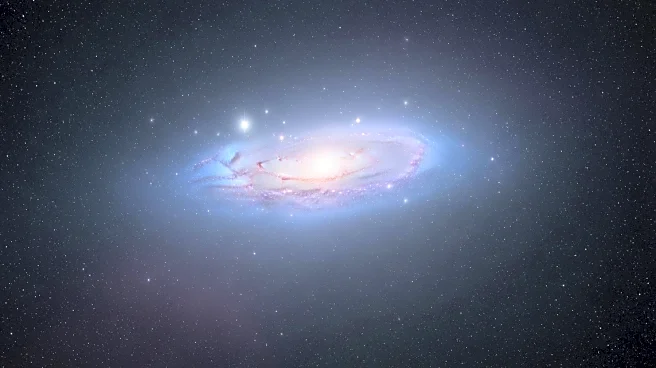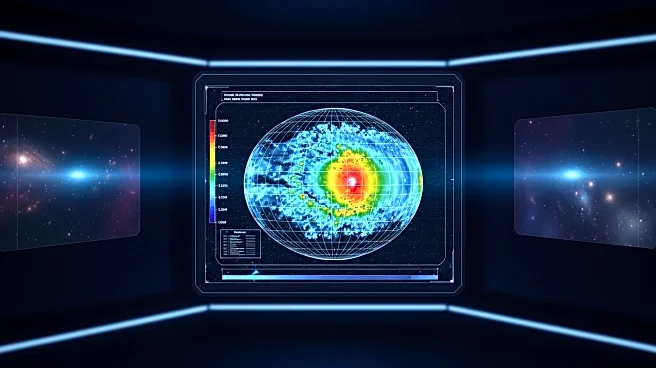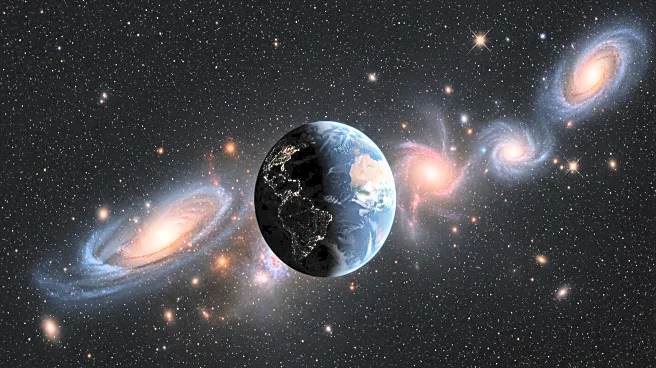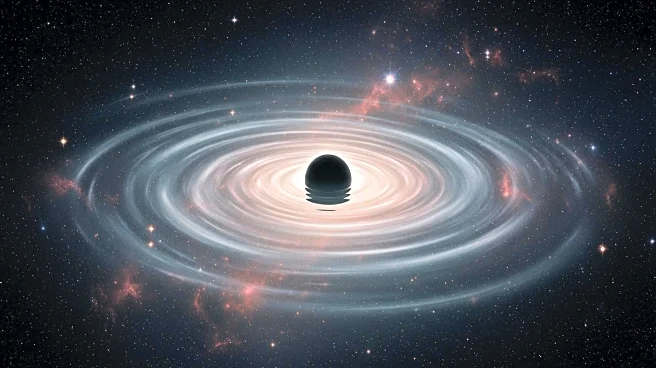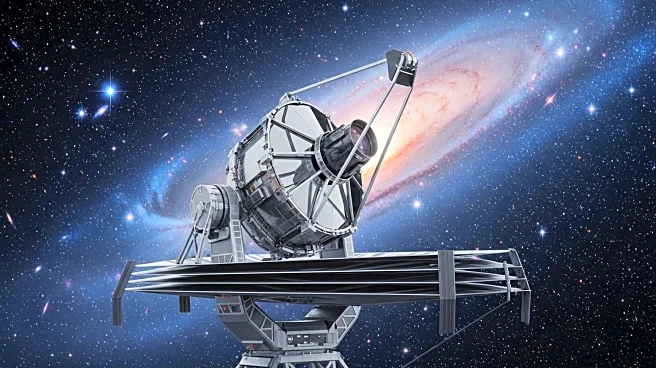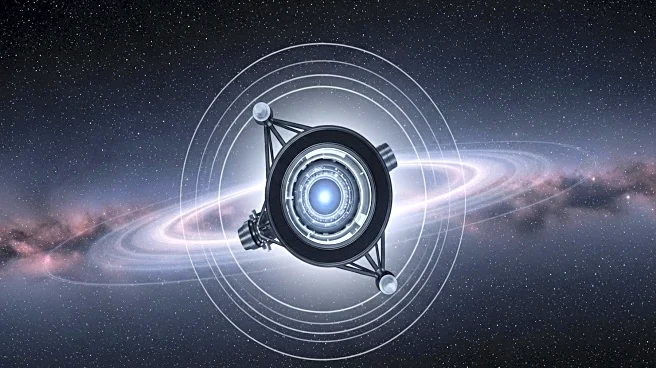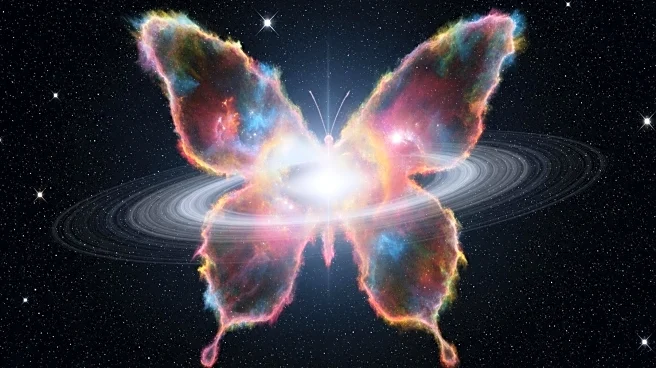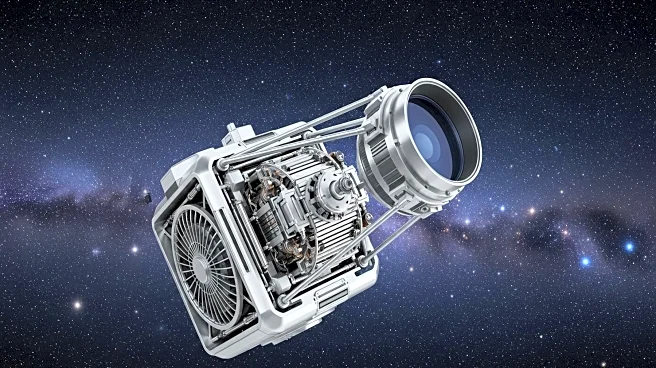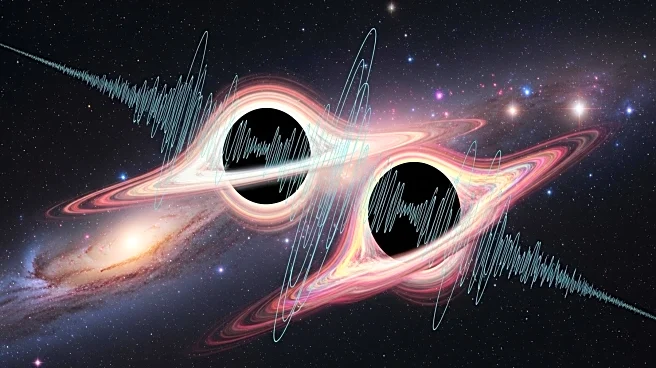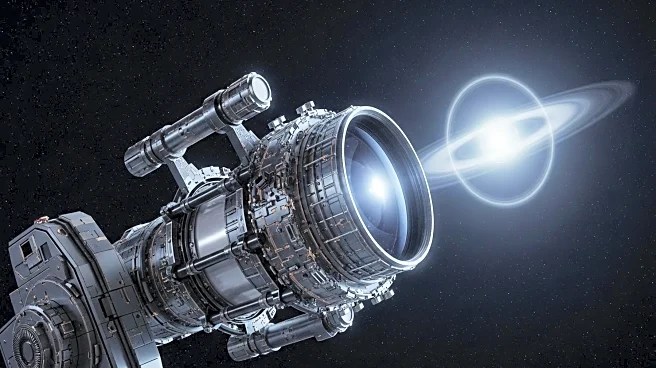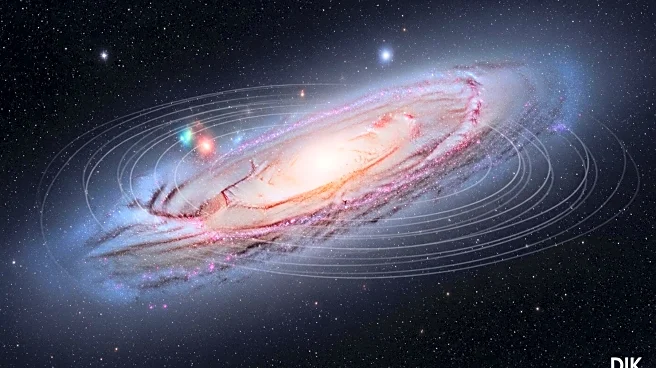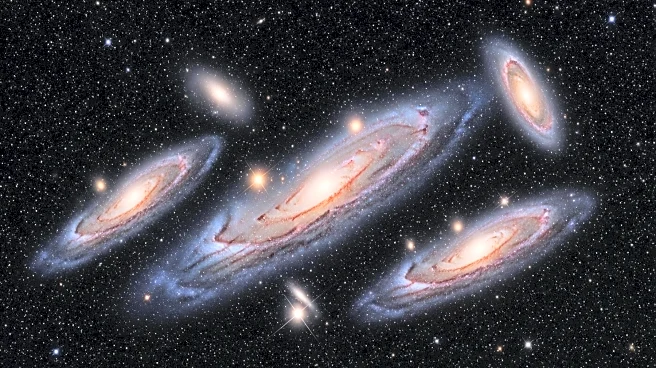What is the story about?
What's Happening?
Astronomers have potentially discovered a galaxy, named Capotauro, that may have formed within 90 million years of the Big Bang, making it the earliest known galaxy. This discovery was made using data from the James Webb Space Telescope (JWST). The galaxy exhibits a redshift of 32, indicating its light began traveling towards us when the universe was extremely young. However, the galaxy's brightness and mass challenge existing models of galaxy formation, suggesting it may be an extremely young galaxy or a different cosmic object, such as a primordial black hole surrounded by a dense atmosphere.
Why It's Important?
If confirmed, Capotauro would significantly alter our understanding of galaxy formation and the early universe. The discovery challenges current models, which suggest galaxies of such mass should not exist at this early stage. This could lead to a reevaluation of the processes that govern galaxy formation and the conditions of the early universe. The potential identification of a primordial black hole or other unusual object also opens new avenues for research into the diversity of cosmic structures and their evolution.
What's Next?
Further observations with JWST are needed to confirm the nature of Capotauro. Detailed spectral analysis could provide insights into its composition and structure, helping to determine whether it is indeed a galaxy or another type of cosmic object. The findings could prompt revisions to existing models of galaxy formation and influence future research directions in cosmology.
AI Generated Content
Do you find this article useful?
